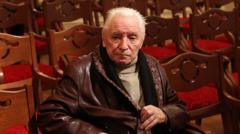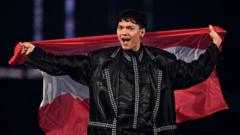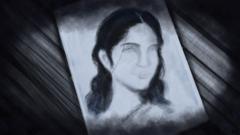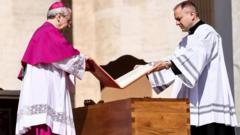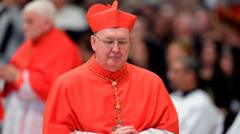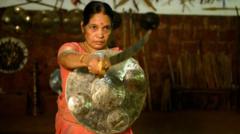This article examines the rich cultural significance and theatrical elements of theyyam, a transformative ritual theater performed in India’s Kerala, highlighting its history, mythology, and the role of both performers and the community.
**Exploring Theyyam: The Divine Transformation of Performers in Ancient Rituals**
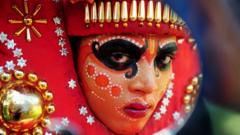
**Exploring Theyyam: The Divine Transformation of Performers in Ancient Rituals**
A deep dive into Kerala's vibrant theyyam tradition, where performers embody deities through elaborate rituals.
In India's southern state of Kerala, a centuries-old tradition thrives, enveloped in vivid colors, intense performances, and deep spirituality. Theyyam, an ancient folk ritual that predates Hinduism, combines elements of theatrical spectacle and devotion, allowing performers to embody divine figures in an immersive ritual experience.
For almost 300 years, the ancestral home of the Gopalakrishnan family in Kasaragod district has served as a vibrant stage for this ritual, which involves predominantly male performers from marginalized castes and tribal backgrounds. Each year, nearly a thousand theyyam performances take place, particularly from November to April, showcasing elaborate costumes and trance-like dances that tell stories rooted in Hindu mythology and ancient tribal traditions.
Historian KK Gopalakrishnan, a custodian of this rich legacy, has chronicled against the backdrop of his family’s involvement in theyyam in his book, *Theyyam: An Insider’s Vision*. His work explores both the evolving nature of this art form and the surge of Muslim participation within a tradition traditionally rooted in Hindu culture.
The theyyam performances at the Gopalakrishnan residence attract large crowds, marking a celebration of themes ranging from ancestor deification to tiger spirit worship, each richly signifying protection and strength. Before performances, essential rituals are observed in the nearby forest, believed to be the deity's earthly abode, heightening the experience of transformation as the "spirit of the goddess" is invited into the home.
Significantly, the involvement of women in these rituals cannot be understated. Senior female family members play pivotal roles in upholding traditions, preparing rituals, and orchestrating ceremonial proceedings, ensuring the family’s legacy remains intact. Mr. Gopalakrishnan notes, "They enjoy high respect and are integral to maintaining the family’s legacy.”
Ferocious and transformative, theyyam blends dramatic flair with spiritual fervor through acts such as fire-walking and dancing over burning embers—courageous feats that evoke reverence toward the divine. Fire, a critical element in many performances, symbolizes purification and the overwhelming energy of the rituals, embodying the power of the deities and signifying the supernatural protection they offer.
Each theyyam transformation is marked by stunning, intricately designed make-up and costumes, symbolizing various ancestral spirits, animals, and natural forces. As performers don their elaborate attires and adjust their makeup, they become living manifestations of gods; one notable embodiment is that of Raktheswari, a fierce representation of Kali, showcasing themes of destruction and raw energy through an intense ritualistic approach.
The deeply rooted connection to nature found in theyyam is also illustrated through performances that pay homage to the powerful spirits of creatures, like a crocodile, emphasizing humanity's ancient ties to the earth and its beings.
As the performances culminate, many devotees seek blessings from the divine embodiments, intertwining their spiritual vulnerabilities with expressions of faith. Amidst the dramatic spectacle, theyyam recreates timeless narratives that connect the past with the present, acting as a living bridge to the divine.
In an environment where community, culture, and spirituality converge, theyyam promises an enchanting journey into the heart of Kerala's soulful traditions.
For almost 300 years, the ancestral home of the Gopalakrishnan family in Kasaragod district has served as a vibrant stage for this ritual, which involves predominantly male performers from marginalized castes and tribal backgrounds. Each year, nearly a thousand theyyam performances take place, particularly from November to April, showcasing elaborate costumes and trance-like dances that tell stories rooted in Hindu mythology and ancient tribal traditions.
Historian KK Gopalakrishnan, a custodian of this rich legacy, has chronicled against the backdrop of his family’s involvement in theyyam in his book, *Theyyam: An Insider’s Vision*. His work explores both the evolving nature of this art form and the surge of Muslim participation within a tradition traditionally rooted in Hindu culture.
The theyyam performances at the Gopalakrishnan residence attract large crowds, marking a celebration of themes ranging from ancestor deification to tiger spirit worship, each richly signifying protection and strength. Before performances, essential rituals are observed in the nearby forest, believed to be the deity's earthly abode, heightening the experience of transformation as the "spirit of the goddess" is invited into the home.
Significantly, the involvement of women in these rituals cannot be understated. Senior female family members play pivotal roles in upholding traditions, preparing rituals, and orchestrating ceremonial proceedings, ensuring the family’s legacy remains intact. Mr. Gopalakrishnan notes, "They enjoy high respect and are integral to maintaining the family’s legacy.”
Ferocious and transformative, theyyam blends dramatic flair with spiritual fervor through acts such as fire-walking and dancing over burning embers—courageous feats that evoke reverence toward the divine. Fire, a critical element in many performances, symbolizes purification and the overwhelming energy of the rituals, embodying the power of the deities and signifying the supernatural protection they offer.
Each theyyam transformation is marked by stunning, intricately designed make-up and costumes, symbolizing various ancestral spirits, animals, and natural forces. As performers don their elaborate attires and adjust their makeup, they become living manifestations of gods; one notable embodiment is that of Raktheswari, a fierce representation of Kali, showcasing themes of destruction and raw energy through an intense ritualistic approach.
The deeply rooted connection to nature found in theyyam is also illustrated through performances that pay homage to the powerful spirits of creatures, like a crocodile, emphasizing humanity's ancient ties to the earth and its beings.
As the performances culminate, many devotees seek blessings from the divine embodiments, intertwining their spiritual vulnerabilities with expressions of faith. Amidst the dramatic spectacle, theyyam recreates timeless narratives that connect the past with the present, acting as a living bridge to the divine.
In an environment where community, culture, and spirituality converge, theyyam promises an enchanting journey into the heart of Kerala's soulful traditions.






